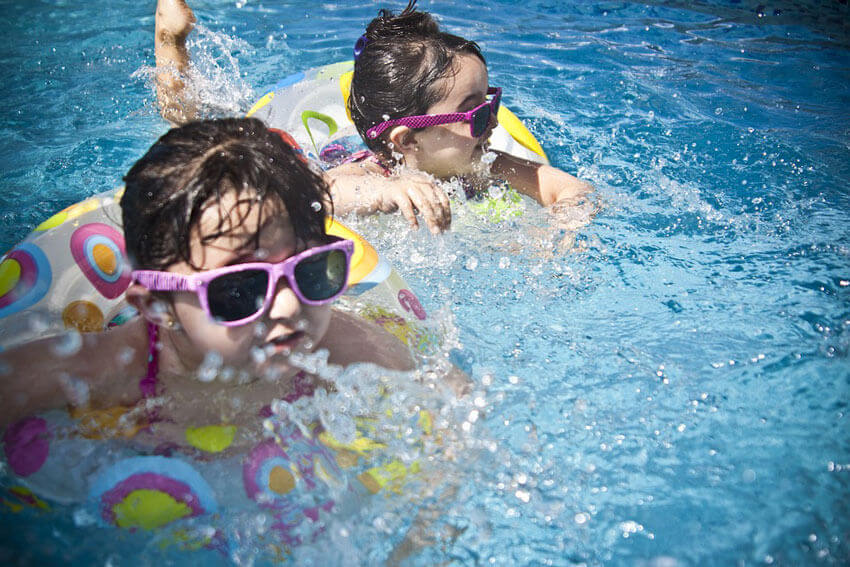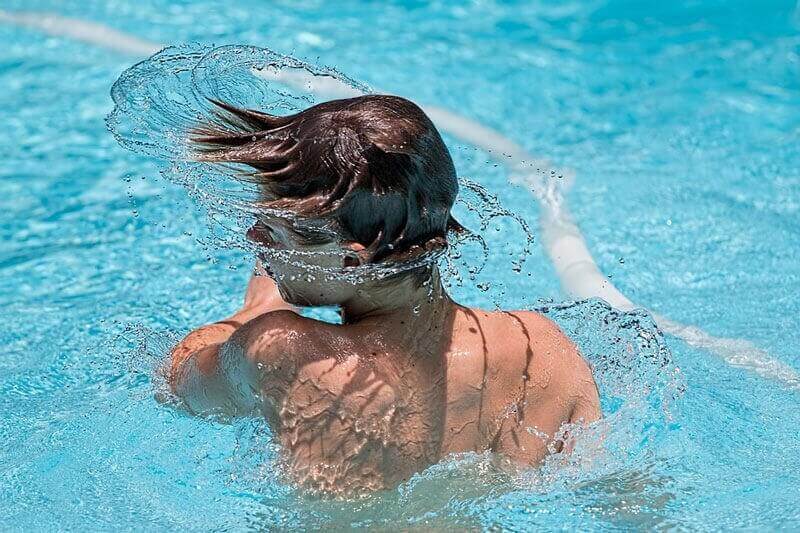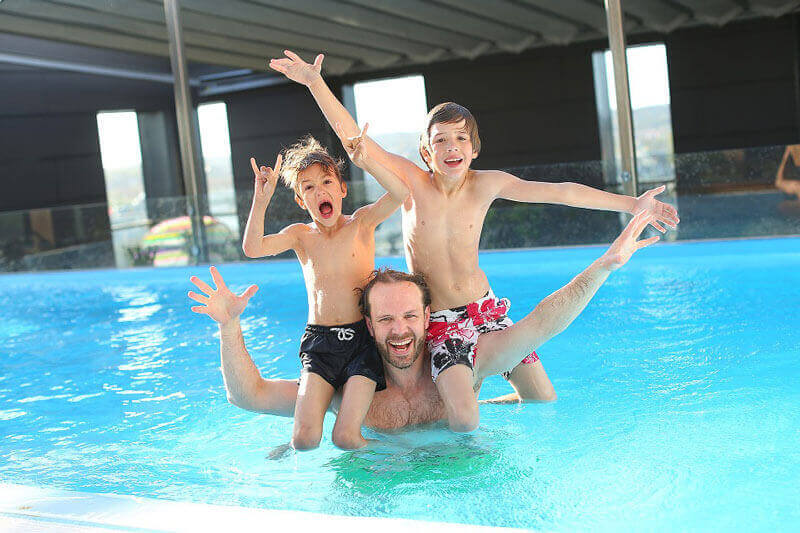
Pool Area Maintenance Tasks You Shouldn’t Skip
Even diligent pool owners miss key maintenance steps. Use this checklist to catch commonly forgotten tasks and keep your pool area safer and more efficient year-round.

If you’re planning on moving into a new home with a pool or having one of your own built, you’re soon to have fun times with family and friends. But before the good times roll, it’s important to use a new pool safety checklist to help ensure that the pool site is safe for all who might have access to it, especially children, elderly adults, and adults living with disabilities. With this in mind, here are eight pool safety considerations to include in your new pool safety checklist:
One of the most important new pool safety measures is to simply make sure that your pool’s ladders and rails are securely installed. Checking them should only take a few minutes. You will have peace of mind, once you know they’re secure.
The installer should check to see that these elements are properly attached before saying the job is complete. However, because a wobbly ladder or rail could potentially cause fall injuries or make it harder for a swimmer to exit the pool, it’s a good idea to do a follow up to see if any ladders or handrails need further work.
You’ll get hours of enjoyment out of your pool every month, but you’ve got to know that pools are also inherently dangerous! Many swimming pool drownings happen to children when they end up in the water with no adult supervision. Installing a pool safety fence, a pool safety net, or a pool safety cover from a company like All-Safe provides a strong deterrent to children, as well as elderly adults and adults living with disabilities, entering the pool unattended. Each product is made from strong synthetics, is customized for the dimensions of your pool, and can be applied or removed in a few minutes.

Cloudy water has been reported as a contributing cause of drowning accidents in swimming pools. Situations have occurred in which children and adults sank to the bottom of pools, went unnoticed due to murky water, and drowned. Covering the pool with a leaf pool cover when it’s not in use, and making sure the water maintains a proper chlorine to water ratio, will help keep your pool crystal clear.
A leaf pool cover prevents leaves from entering the pool, where they decay and release swirling sediments that cloud the water. Chlorine helps prevent the formulation of algae and other micro flora that make pools murkier. The proper water to chlorine balance for a swimming pool is typically 0.00013 ounces of chlorine for every gallon of water.
Installing a pool wave detection alarm should also be among your pool safety considerations. There are several different types of alarms, but the wave detection models have two basic designs: one that mounts the alarms on the pool deck, just above the water’s surface, and one that allows the alarm to float freely throughout the pool.
In either case, the alarm works by sensing water surface movements that characteristically occurs when a person falls into a pool. If someone happens to make it past your pool safety barrier and falls into the water, the alarm will sound, alerting you to quickly check the pool.
Another simple but highly effective measure for new pool safety is to keep the patio area that borders your pool free of toys and other objects, which could cause swimmers to trip and fall into the water, or trip and suffer injuries from landing on the patio surface. These items are often left behind from the previous pool session.
Establishing a rule that everyone must pick up and put away items they use on the pool patio is an easy way to enhance new pool safety.
Speaking of establishing safety rules, it’s also a good idea to set rules for how children should behave in the pool area, in order to help them avoid injuries or drowning. For example, you can help prevent slip and fall injuries by instructing children to walk and not run. Forbidding them to throw hard objects — such as rigid, plastic pool toys — helps prevent injuries, too.
You know better than anyone how your children and their friends tend to behave in the pool area. Use your observations to your advantage when setting rules for safe behavior.
If you have small children, let them know they need supervision when entering the pool, or the pool patio area as a whole — and consider establishing rewards for obedience. Motivating your kids to obey the rule creates a strong new pool safety measure against drowning accidents. When your kids have proper supervision, their chance of drowning drops considerably.
Children are often more receptive to this if you explain that even adults need someone to watch over them at the pool to keep them safe.

Ideally, your new pool safety measures should also include knowing how to perform CPR, as well as keeping a first-aid kit in the pool area to treat scrapes that could occur from falling on the patio. If you have a strong pool safety barrier in place, and the pool patio is kept free of clutter, you might never need to apply CPR, or use the safety kit. However, there’s always the chance that you may need to. Make these resources available as soon as possible.
Your new pool will be the site of fun with family and friends. But it could also be the site of injuries or a drowning accident if proper safety measures aren’t taken. The eight pool safety considerations on this checklist establish a high level of new pool safety that goes a long way toward preventing such incidents.
Pools need a fence or safety barrier of some kind to prevent people and animals from entering the pool area, including your kids and pets, as well as the neighbor’s kids. Some of the strongest and most effective pool safety barriers are mesh pool fences by All-Safe.
Call your local All-Safe dealer for a free consultation and quote on how best to protect your family around the pool.

Even diligent pool owners miss key maintenance steps. Use this checklist to catch commonly forgotten tasks and keep your pool area safer and more efficient year-round.

Learn the most common pool winterizing mistakes and how to avoid them for a safer, cleaner backyard during the off-season.

Mesh pool covers offer reliable winter protection by keeping out debris and preventing accidents. Learn why they’re a smart choice for safety and peace of mind.
Enter your zip code to locate an independent installer in your area
Enter your zip code to locate an independent installer in your area

Due to the many variations in monitors, phones, and browsers, color samples and product examples may appear different on different screens. Computers and mobile devices are not all calibrated equally and color reproduction on the Internet is not precise. The same is true for printed items such as brochures and other sales literature.
In addition, the colors of our products photograph differently under different lighting conditions. For example, photos taken in full sunlight will vary from photos taken on a cloudy or overcast day. Similarly, shadows from nearby objects can affect the color and transparency of our products. If a precise color or specific shade is important, please inspect the actual color of your product prior to installation.
Many of our products’ materials are not available through typical stores and vendors and therefore must be custom manufactured specifically for our use. In order to control costs and provide you with the best value possible, our raw materials are produced in large batches and can often take several months to receive. The colors of our materials can, and often do, vary slightly from batch to batch. Although we make every effort to minimize color variations, we cannot be responsible for these differences when they occur. If a precise color or specific shade is important, please inspect the actual color of your product prior to installation.
For example, we use the name “putty” to describe some of our products. Your idea of the color “putty” may be different than someone else’s idea of “putty”. In addition, products may have the same color name but may not be the exact same color. For example, we have different shades of “black”. Please do not order using color names as your only guide. If a precise color or specific shade is important, please inspect the actual color of your product prior to installation.
If it is important that your product be an exact color or shade, it is highly recommended that you inspect the actual product prior to its installation and address any concerns with your local independent installer. Most independent installers do not offer refunds or accept returns due to color variations.